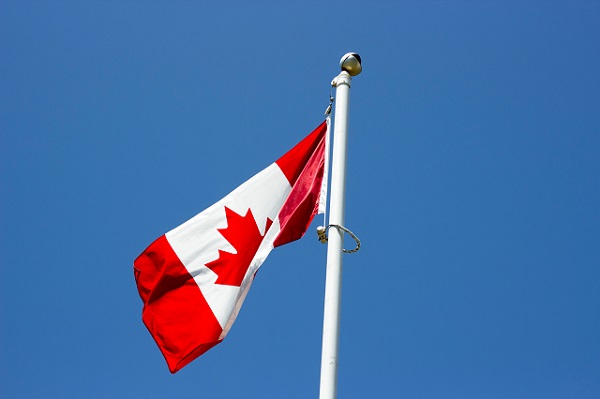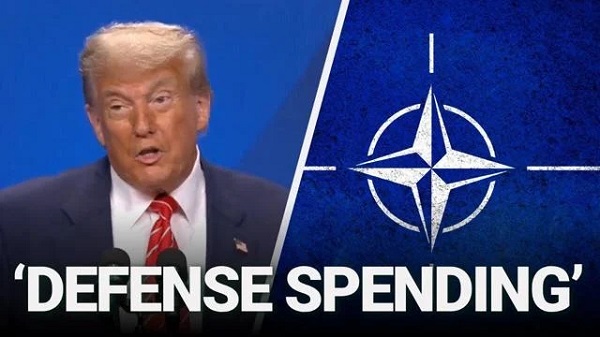Business
Higher Capital Gains Taxes cap off a loser federal budget

From Frontier Centre for Public Policy
By Lee Harding
Even former Liberal Finance Minister Bill Morneau told the Financial Post the capital gains tax increase would be “very troubling for many investors.” He added, “I don’t think there was enough effort in this budget to reduce spending, to create that appropriate direction for the economy.”
New taxes on capital gains mean more capital pains for Canadians as they endure another tax-grabbing, heavy-spending federal deficit budget.
Going forward, the inclusion rate increases to 66 per cent, up from 50 per cent, on capital gains above $250,000 for people and on all capital gains for corporations and trusts. The change will affect 307,000 businesses and see Ottawa, according to probably optimistic projections, rake in an additional $19.4 billion over four years.
A wide chorus of voices have justifiably condemned this move. If an asset is sold for more than it was bought for, the government will claim two-thirds of the value because half is no longer enough. It’s pure government greed.
If you were an investor or a young tech entrepreneur looking for somewhere to set up shop, would you choose Canada? And if you’re already that investor, how hard would you work to appreciate your assets when the government seizes much of the improvement?
Even before this budget, the OECD predicted Canada would have the lowest growth rates in per-person GDP up to 2060 of all its member countries.
In a speech in Halifax on March 26, Bank of Canada senior deputy governor Carolyn Rogers put the productivity problem this way: “You’ve seen those signs that say, ‘In emergency, break glass.’ Well, it’s time to break the glass.”
What can Canadians bash now? Their heads against a wall?
Even former Liberal Finance Minister Bill Morneau told the Financial Post the capital gains tax increase would be “very troubling for many investors.” He added, “I don’t think there was enough effort in this budget to reduce spending, to create that appropriate direction for the economy.”
No kidding. Not since the first Prime Minister Trudeau (Pierre) have Canadians been able to count so reliably on deficit spending, higher expenditures, and more taxes.
Long ago, it seems now, when Justin Trudeau was not yet prime minister, he campaigned on “a modest short-term deficit” of less than $10 billion for each of the first three years and a balanced budget by the 2019-2020 fiscal year.
His rationale was that low interest rates made it a rare opportunity to borrow and build infrastructure, all to encourage economic growth. Of course, the budget never balanced itself and Canada has lost $225 billion in foreign investment since 2016.
The deficits continue though the excuse of low interest rates is long gone. Despite higher carbon and capital gains taxes, this year’s deficit will match last year’s: $40 billion. Infrastructure seems less in view than an ever-expanding nanny state of taxpayer-funded dental care, child care, and pharmacare.
Of course, the Trudeau deficits were not as modest as advertised, and all-time federal debt has doubled to $1.2 trillion in less than a decade. Debt interest payments this coming fiscal year will be $54.1 billion, matching GST revenue and exceeding the $52 billion of transfers to the provinces for health care.
In 1970, columnist Lubor Zink quoted Pierre Trudeau as saying, “One has to be in the wheelhouse to see what shifts are taking place . . . The observer . . . on the deck . . . sees the horizon much in the same direction and doesn’t realize it but perhaps he will find himself disembarking at a different island than the one he thought he was sailing for.”
Like father, like son, Justin Trudeau has captained Canada to a deceptive and unwelcome destination. What started as Fantasy Island is becoming Davy Jones’ Locker.
Lee Harding is a Research Fellow at the Frontier Centre for Public Policy
Business
RFK Jr. says Hep B vaccine is linked to 1,135% higher autism rate

From LifeSiteNews
By Matt Lamb
They got rid of all the older children essentially and just had younger children who were too young to be diagnosed and they stratified that, stratified the data
The Centers for Disease Control and Prevention (CDC) found newborn babies who received the Hepatitis B vaccine had 1,135-percent higher autism rates than those who did not or received it later in life, Robert F. Kennedy Jr. told Tucker Carlson recently. However, the CDC practiced “trickery” in its studies on autism so as not to implicate vaccines, Kennedy said.
RFK Jr., who is the current Secretary of Health and Human Services, said the CDC buried the results by manipulating the data. Kennedy has pledged to find the causes of autism, with a particular focus on the role vaccines may play in the rise in rates in the past decades.
The Hepatitis B shot is required by nearly every state in the U.S. for children to attend school, day care, or both. The CDC recommends the jab for all babies at birth, regardless of whether their mother has Hep B, which is easily diagnosable and commonly spread through sexual activity, piercings, and tattoos.
“They kept the study secret and then they manipulated it through five different iterations to try to bury the link and we know how they did it – they got rid of all the older children essentially and just had younger children who were too young to be diagnosed and they stratified that, stratified the data,” Kennedy told Carlson for an episode of the commentator’s podcast. “And they did a lot of other tricks and all of those studies were the subject of those kind of that kind of trickery.”
But now, Kennedy said, the CDC will be conducting real and honest scientific research that follows the highest standards of evidence.
“We’re going to do real science,” Kennedy said. “We’re going to make the databases public for the first time.”
He said the CDC will be compiling records from variety of sources to allow researchers to do better studies on vaccines.
“We’re going to make this data available for independent scientists so everybody can look at it,” the HHS secretary said.
— Matt Lamb (@MattLamb22) July 1, 2025
Health and Human Services also said it has put out grant requests for scientists who want to study the issue further.
Kennedy reiterated that by September there will be some initial insights and further information will come within the next six months.
Carlson asked if the answers would “differ from status quo kind of thinking.”
“I think they will,” Kennedy said. He continued on to say that people “need to stop trusting the experts.”
“We were told at the beginning of COVID ‘don’t look at any data yourself, don’t do any investigation yourself, just trust the experts,”‘ he said.
In a democracy, Kennedy said, we have the “obligation” to “do our own research.”
“That’s the way it should be done,” Kennedy said.
He also reiterated that HHS will return to “gold standard science” and publish the results so everyone can review them.
Business
Elon Musk slams Trump’s ‘Big Beautiful Bill,’ calls for new political party

From LifeSiteNews
By Robert Jones
The Tesla CEO warned that Trump’s $5 trillion plan erases DOGE’s cost-cutting gains, while threatening to unseat lawmakers who vote for it.
Elon Musk has reignited his feud with President Donald Trump by denouncing his “Big Beautiful Bill” in a string of social media posts, warning that it would add $5 trillion to the national debt.
“I’m sorry, but I just can’t stand it anymore. This massive, outrageous, pork-filled Congressional spending bill is a disgusting abomination. Shame on those who voted for it: you know you did wrong. You know it,” Musk exclaimed in an X post last month.
I’m sorry, but I just can’t stand it anymore.
This massive, outrageous, pork-filled Congressional spending bill is a disgusting abomination.
Shame on those who voted for it: you know you did wrong. You know it.
— Elon Musk (@elonmusk) June 3, 2025
Musk renewed his criticism Monday after weeks of public silence, shaming lawmakers who support it while vowing to unseat Republicans who vote for it.
“They’ll lose their primary next year if it is the last thing I do on this Earth,” he posted on X, while adding that they “should hang their heads in shame.”
Every member of Congress who campaigned on reducing government spending and then immediately voted for the biggest debt increase in history should hang their head in shame!
And they will lose their primary next year if it is the last thing I do on this Earth.
— Elon Musk (@elonmusk) June 30, 2025
The Tesla and SpaceX CEO also threatened to publish images branding those lawmakers as “liars.”
Trump responded on Truth Social by accusing Musk of hypocrisy. “He may get more subsidy than any human being in history,” the president wrote. “Without subsidies, Elon would probably have to close up shop and head back home to South Africa… BIG MONEY TO BE SAVED!!!”
( @realDonaldTrump – Truth Social Post )
( Donald J. Trump – Jul 01, 2025, 12:44 AM ET )Elon Musk knew, long before he so strongly Endorsed me for President, that I was strongly against the EV Mandate. It is ridiculous, and was always a major part of my campaign. Electric cars… pic.twitter.com/VPadoTBoEt
— Donald J. Trump 🇺🇸 TRUTH POSTS (@TruthTrumpPosts) July 1, 2025
Musk responded by saying that even subsidies to his own companies should be cut.
Before and after the 2024 presidential election, Musk spoke out about government subsidies, including ones for electric vehicles, stating that Tesla would benefit if they were eliminated.
This latest exchange marks a new escalation in the long-running and often unpredictable relationship between the two figures. Musk contributed more than $250 million to Trump’s reelection campaign and was later appointed to lead the Department of Government Efficiency (DOGE), which oversaw the termination of more than 120,000 federal employees.
Musk has argued that Trump’s new bill wipes out DOGE’s savings and reveals a deeper structural problem. “We live in a one-party country – the PORKY PIG PARTY!!” he wrote, arguing that the legislation should be knows as the “DEBT SLAVERY bill” before calling for a new political party “that actually cares about the people.”
It is obvious with the insane spending of this bill, which increases the debt ceiling by a record FIVE TRILLION DOLLARS that we live in a one-party country – the PORKY PIG PARTY!!
Time for a new political party that actually cares about the people.
— Elon Musk (@elonmusk) June 30, 2025
In June, Musk deleted several inflammatory posts about the president, including one claiming that Trump was implicated in the Jeffrey Epstein files. He later acknowledged some of his comments “went too far.” Trump, in response, said the apology was “very nice.”
With the bill still under Senate review, the dispute underscores growing pressure on Trump from fiscal hardliners and tech-aligned conservatives – some of whom helped deliver his return to power. Cracks in the coalition may spell longer term problems for the Make America Great Again movement.
-

 Alberta24 hours ago
Alberta24 hours agoAlberta judge sides with LGBT activists, allows ‘gender transitions’ for kids to continue
-

 Alberta1 day ago
Alberta1 day agoAlberta Independence Seekers Take First Step: Citizen Initiative Application Approved, Notice of Initiative Petition Issued
-

 Crime13 hours ago
Crime13 hours agoNational Health Care Fraud Takedown Results in 324 Defendants Charged in Connection with Over $14.6 Billion in Alleged Fraud
-

 Health13 hours ago
Health13 hours agoRFK Jr. Unloads Disturbing Vaccine Secrets on Tucker—And Surprises Everyone on Trump
-

 Business1 day ago
Business1 day agoCanada Caves: Carney ditches digital services tax after criticism from Trump
-

 Crime1 day ago
Crime1 day agoSuspected ambush leaves two firefighters dead in Idaho
-

 Business1 day ago
Business1 day agoMassive government child-care plan wreaking havoc across Ontario
-

 Bruce Dowbiggin1 day ago
Bruce Dowbiggin1 day agoThe Game That Let Canadians Forgive The Liberals — Again






